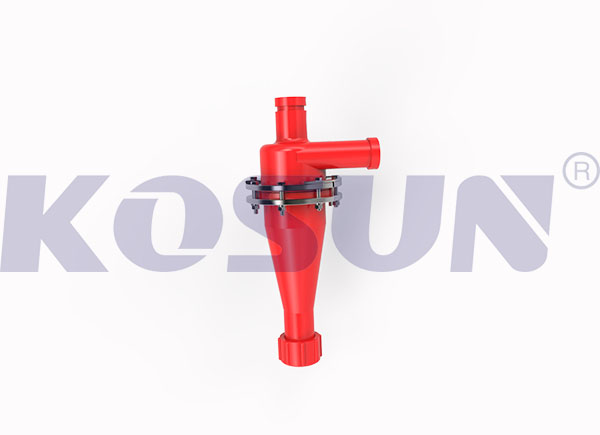

Main parameters of Hydrocyclones
Pub Date:Dec 18, 2017 | Views:172 |
There are many parameters associated with hydrocyclones, such as structural aspects, process operations, and feedstock properties. The following is a brief description of the main parameters of hydrocyclone:
(1) Cylindrical cylinder diameter and height. The diameter is the main size of the hydrocyclone, it has a certain relationship with the size of other components. If increasing this diameter size, the throughput will increase, but the overflow particle size will become thicker. In order to classify the fine-grained material and increase the throughput, it commonly uses a large number of small-sized cyclones in parallel. The height of the cylindrical body is generally 0.6 to 1.0 of its diameter.

(2) Inlet diameter of the mine. This diameter is usually 0.08 ~ 0.25 of the diameter of the hydrocyclone. A value larger than this would increase the throughput, but the classification efficiency is reduced. The inlet diameter of the mine is often made of rectangular.
(3) Overflow pipe diameter. This diameter is generally 0.1 ~ 0.4 of the cyclone diameter, which can be used to adjust the relative yield of overflow and grit. The diameter of the overflow pipe increases, the overflow increases, the overflow particle size becomes thicker, the fine sand decreases and the concentration increases.
(4) Output diameter of the sand. Normally, output diameter of the sand increases, the overflow volume decreases, the overflow grit size decreases, and the grit amount increases, the concentration becomes lower and the grit size increases, but it has no obvious effect on the processing capacity.
(5) Overflow pipe insertion depth. Too shallow insertion can cause the coarse particles entering the overflow. Inserting too deeply cause the bottom coarse particles entering into the overflow, which will reduce the classification efficiency. The depth of the overflow pipe should generally be 0.7-0.8 of the height of the cylindrical cylinder.
(6) Conical cylinder cone angle. Increasing the cone angle reduces the height of the equipment and increases the average radial velocity of the slurry.
(7) Ore feeding pressure. Commonly ore pressure is 49 ~ 157kPa (0.5 ~ 1.6kgf / cm2). There is a direct relationship between pressure and processing capacity and particle size separation. Increasing the pressure to the ore reduces the graded size and increases throughput.
(8) Pulp properties. Mainly refers to the ore density, particle size and pulp concentration. The appropriate pulp concentration is usually determined experimentally on a case by case basis. (Editor:Kosun Lily.Wang)